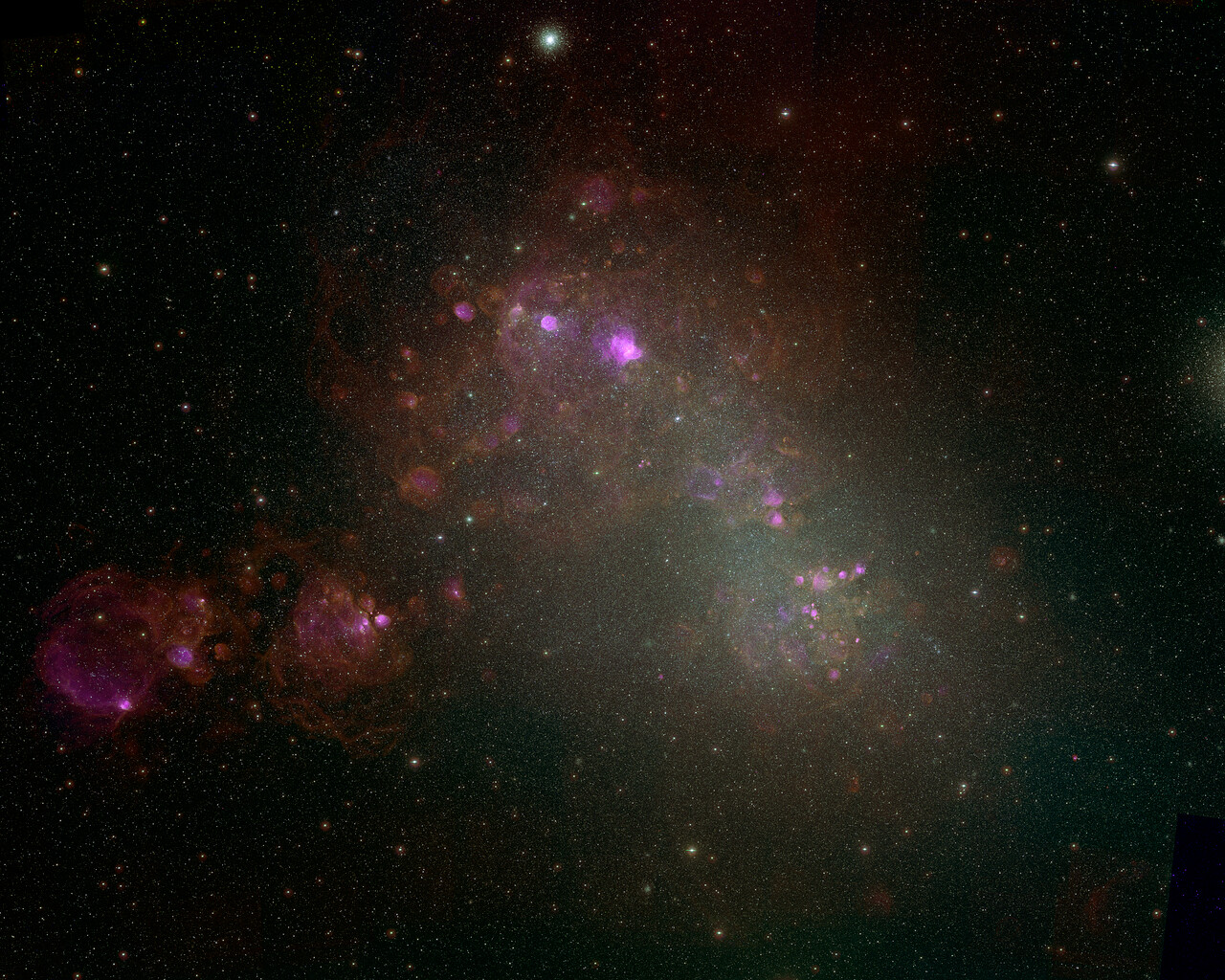Tucana
Origin
The constellation of Tucana, representing a toucan, is a relatively modern addition to the celestial map, introduced in 1598 by Flemmish astronomer Petrus Plancius. The name Tucana reflects the toucan, a colorful and distinctive bird native to South America and other tropical regions. Tucana is a faint constellation and its brightest star, Alpha Tucanae, shines at magnitude 2.87.
Bright Stars
Tucana, while notable for its distinct shape and association with the toucan, does not contain any particularly bright stars that are well known.


 Photo of the constellation Tucana produced by NOIRLab in collaboration with Eckhard Slawik, a German astrophotographer.
The annotations are from a standardized set of 88 western IAU constellations and stick figures from Sky & Telescope. Please find here a non-annotated version of the image.
Photo of the constellation Tucana produced by NOIRLab in collaboration with Eckhard Slawik, a German astrophotographer.
The annotations are from a standardized set of 88 western IAU constellations and stick figures from Sky & Telescope. Please find here a non-annotated version of the image.
Credit: E. Slawik/NOIRLab/NSF/AURA/M. Zamani
Notable Objects
NGC 104 (47 Tucanae): This is one of the most massive and luminous globular clusters in the Milky Way. It's a prominent target and can be observed in great detail with a small telescope.
NGC 362: is a bright globular cluster in Tucana. It's an attractive target for small telescopes, with a dense core and many stars.








